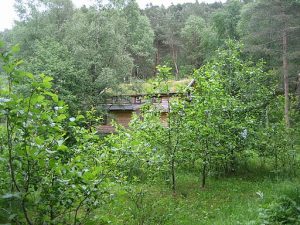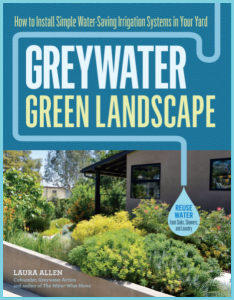Can ecological sanitation help increase the supply of affordable housing?
December 28, 2021
As the cost of housing skyrockets across the United States, we’ve been wondering about the potential of water reuse and low-water toilet technologies to augment the affordable housing supply. Now, housing advocates, local officials, and residents in rural Jefferson County, Washington, have asked PHLUSH to find out. If ecological sanitation technologies are made legal and efficient, we believe low-cost housing will be easier to provide.
Across America, the costs of maintaining onsite (or decentralized) sanitation systems is prohibitive for many working families. For the increasing number of people living in tiny houses, mobile homes, RVs, and yurts, a legal framework for water reuse and dry toilets with composting treatment can mean the difference between having a safe, secure place to live and houselessness. Similarly, technologies based in science and articulated in new codes prepare urban areas for interruptions in sewer service brought by earthquakes, unprecedented storms, sea level rise, or cyberattacks.

SuSanA Secretariat, CC BY 2.0 (https://creativecommons.org/licenses/by/2.0), via Wikimedia Commons
Jefferson County’s housing emergency continues to worsen.
Located on Washington’s Olympic Peninsula, Jefferson County has seen the median home price increase 75% in just five years to $562,0001. Of rental properties, less than 1% are on the market at any given time. Thousands of houses sit empty while local business contracts due to the scarcity of available workers. When Jefferson County homeowners lack the $10,000 to $25,000 required to upgrade their septic system, current Washington codes effectively penalize low-income citizens.
By following the science and adopting voluntary codes for greywater reuse and dry toilet systems, local governments can help people remain in their homes, or expand them to accommodate renters. With Jefferson County’s water supplies and piped infrastructure vulnerable to seismic events, disrupted weather systems, and sea-level rise, the use of alternative technologies can build community resilience while addressing human needs.
The Sanitation HAT moves into action.
PHLUSH has partnered with the Housing Solutions Network to launch a sanitation initiative. Founded in 2018, the Housing Solutions Network (HSN) facilitates “connectivity, communication and the co-creation of new strategies to increase the availability of affordable and attainable housing.” Housing champions of every stripe bring a variety of skills to HSN. Working together on housing action teams, or HATs, volunteers delve into specific issues – zoning, permitting, tiny home and accessory dwelling unit construction, and educating contractors, city and county officials, and people seeking to buy, build, rent, or share homes or practical solutions.
In helping launch the new Sanitation HAT, PHLUSH will benefit from HSN’s administrative support and robust local network as we explore the technological and legal challenges of water reuse and waterless toilet systems. Thanks to funding from the GiveJefferson campaign, PHLUSH has engaged author and Greywater Action cofounder, Laura Allen, for her expertise in working with local governments on regulatory change. Laura currently serves on the Technical Committee updating IAPMO/ANSI WE Stand codes and assisted Washington state legislators in drafting the water reuse bill (HB 1184), which was signed into law by Governor Jay Inslee this year.
How about joining us? The Sanitation HAT launches January 12, 2022.
We invite you to help shape our 2022 agenda and share the workload by conducting desk and field research, advising on code revision, or identifying replicable projects appropriate for local conditions. The inaugural meeting of the Sanitation HAT (housing action team) is on January 12 at 5:30 pm Pacific Time via Zoom. Please register here to receive the meeting link.
Book discussions of Greywater, Green Landscape start later in January.
Can we reuse water from our homes for irrigation? Can enough greywater be diverted to the landscape from onsite treatment systems to keep them working properly while lowering our water bills?
Discussions of Greywater, Green Landscape by Laura Allen will take place later in January. We’ll establish what greywater is and isn’t, look at ways it can be reused, and see how codes for alternative systems have been successfully adopted elsewhere. Greywater, Green Landscape is a groundbreaking book. Essentially a how-to book, it is smartly designed and profusely illustrated in full color. Buy the book, borrow it from the Library; we also have limited copies available to lend. Start reading now and if you’re interested in joining this community discussion contact Carol McCreary.
Facilitating discussions will be Sergio Scabuzzo and Genevieve Schutzius, PE. Sergio is the author’s Greywater Action colleague, a water reuse systems designer, a Port Townsend resident, and a member of Washington State’s HB 1184 rulemaking committee tasked with establishing practical guidance on water reuse. Genevieve is a Corvallis, Oregon-based environmental engineer and President of the PHLUSH Board of Directors.
No time for books or meetings? Consider a donation!
For the third year in a row, PHLUSH is participating in the Give Jefferson year-end campaign to address the basic human needs of Washingtonians in Jefferson County. Can we possibly move you to kick in a few dollars to GiveJefferson or specifically to PHLUSH? For this advocacy, the number of supporters is as important as the number of dollars.
Thank you for your support! We look forward to learning more about ecological sanitation and affordable housing with you!
1 Data for 2021 from the University of Washington’s Runstad Center for Real Estate Studies.




